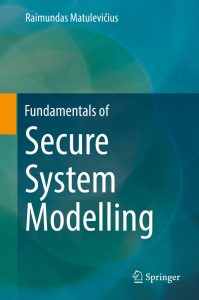This book provides a coherent overview of the most important modelling-related security techniques available today, and demonstrates how to combine them.

Further, it describes an integrated set of systematic practices that can be used to achieve increased security for software from the outset, and combines practical ways of working with practical ways of distilling, managing, and making security knowledge operational.
The book addresses three main topics:
- security requirements engineering, including security risk management, major activities, asset identification, security risk analysis and defining security requirements;
- secure software system modelling, including modelling of context and protected assets, security risks, and decisions regarding security risk treatment using various modelling languages; and
- secure system development, including effective approaches, pattern-driven development, and model-driven security.
The primary target audience of this book is graduate students studying cyber security, software engineering and system security engineering. The book will also benefit practitioners interested in learning about the need to consider the decisions behind secure software systems. Overall it offers the ideal basis for educating future generations of security experts.
Cite: Matulevičius R., Fundamentals of Secure System Modelling, Springer International Publishing, ISBN 978-3-319-61717-6, 2017, 218 pp. URL: http://www.springer.com/9783319617176